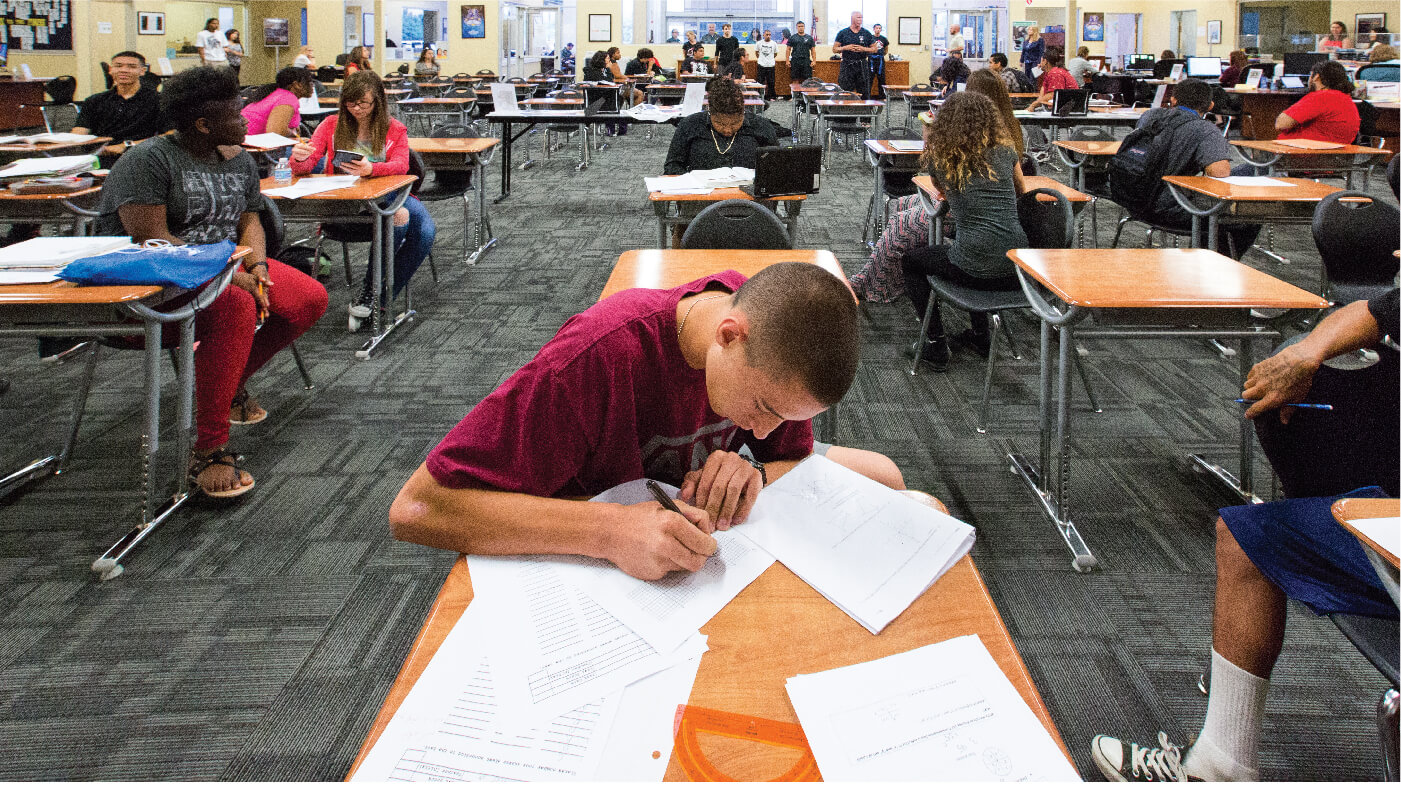
California legislators are attempting to pass a bill (AB 1316) that would greatly limit nonclassroom-based (NCB) charter schools – yet it turns out that most politicians and parents don’t understand the NCB model.
What is a nonclassroom-based charter school?
First, what it is not. Nonclassroom-based does not mean online only. In fact, only about one-third of nonclassroom-based charter schools are primarily or exclusively virtual. It does mean flexible scheduling where students attend their school site as often as they need. One nonclassroom-based charter school network, Learn4Life, has multiple learning centers throughout California where students meet with their teachers, complete work, take tests, attend labs, and receive tutoring and wraparound services.
Students who attend NCB charter schools are primarily those who had formerly dropped out, are from low-income households and deal with multiple recurring obstacles that hinder their success in a traditional school such as parenting, needing to work, dealing with trauma, experiencing homelessness or being in foster care. Rather than large classes, Learn4Life creates classrooms of one where the learning is personalized to the individual and delivered through one-on-one and small-group instruction, tailored to the student’s learning style.
Did you know there are seven different learning styles?
Educators and psychologists agree that there are seven different learning styles: auditory/musical,
visual/spatial, verbal, logical/mathematical, physical/kinesthetic, social/interpersonal and solitary/intrapersonal. Most public high school teachers are responsible for 25-30 students in each of five or six classes. How, then, can they possibly teach 150+ students every day while knowing each learning style and adjusting the methods to engage them?
Why do NCBs work for our most vulnerable students?
Flexibility: Teachers at Learn4Life have caseloads of 30-35 students and meet with them one-on-one to guide them on their assignments. Students can do their homework at school or home, and can join small-group classes, get extra tutoring or meet with a counselor for help with life challenges.
“This flexibility is key for our students, most of whom have adult responsibilities like needing to work or taking care of their babies,” said Lindsay Reese, area superintendent of Learn4Life’s San Diego and Riverside regions. “We have more than 1,500 teen parents across our network of schools who would have likely dropped out if they didn’t have a flexible option. We let them bring their babies to school and have separate quiet, child-friendly areas for our teen parents to watch their youngsters as they meet with teachers and do their homework.”
Accepting of aged-out students: Another benefit of NCB schools is that they can accept youth up to 22 years old once they have aged out of high school. Instead of dropping out and becoming a burden on the community, students can come back to school any day of the year and get the extra support they need to earn their diploma.
“If we’ve learned anything about schooling the past year, it is that flexibility is important and we must do everything we can to keep kids engaged and learning,” said Reese. “Schools should be made convenient for the students – not the staff.”
To learn more about California Assembly Bill 1316 and the benefits of nonclassroom-based charter schools, visit StopAB1316.com.
